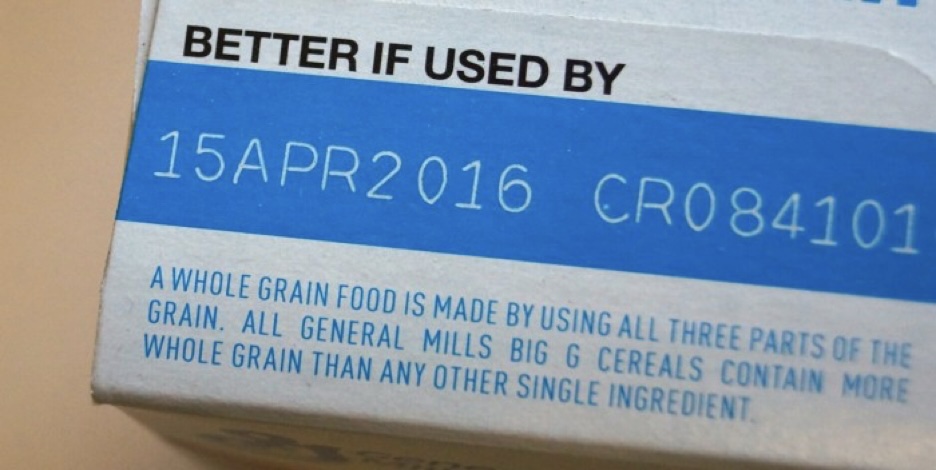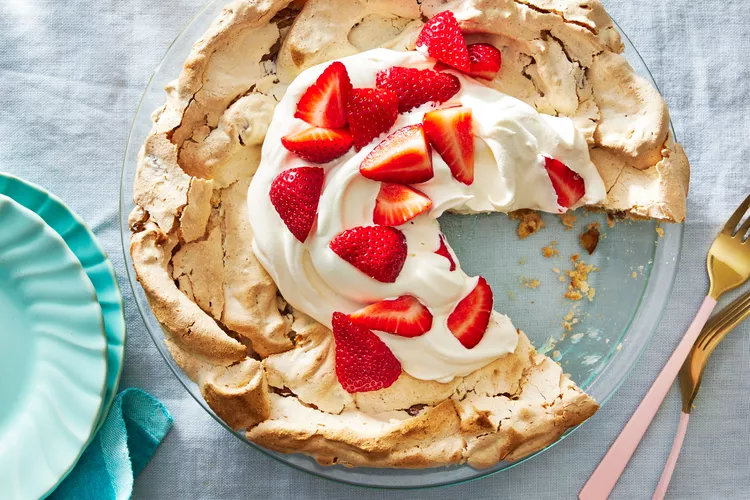Eating Expired Foods—Is This SAFE?
Andrea Beck, researcher and editor for BETTER HOMES AND GARDENS foods and nutrition, researched this question in depth. If you've ever wondered about expiration dates, then you'll be very interested in what she learned (according to food scientists).

We're used to seeing these. Including expiration dates on food packaging is a common practice. Even things that don't expire (like salt and sugar) show them. So that leads to wondering, what do expiration dates actually mean? It's not as though a bag of chips with a "use by" date of March 10 is automatically not good on March 11, so what's the point of expiration dates?
According to food scientists, they don't have as much to do with food safety as you'd think, and the chances of getting sick from eating a yogurt a couple of days past its expiration date are pretty slim. This is because (except for infant formula), expiration dates aren't required or regulated by law—they are determined by the product manufacturer. Expiration dates are simply suggestions from the manufacturer to help you know when the product is at peak quality.

That's the bottom line: It's more about food quality than food safety. With the exception of baby formula, there's no government-regulation or standardization. Manufacturers guess at when their foods are freshest and go from there. This doesn't necessarily mean you should completely ignore expiration dates, though. Food scientists say to think of them as guidelines rather than as hard rules about when food is safe to eat.
For example, canned foods and non-perishable products are likely to last long past their expiration dates. Where you want to pay close attention to food expiration dates is on foods that spoil more easily, like fresh fruits, vegetables, and eggs.
But it goes back to QUALITY, since food becomes less nutritious the longer it sits around. That's one of the reasons the U.S. Department of Agriculture does regulate the expiration dates on infant formula—past the expiration date, there's no guarantee that the formula matches the nutrition information on the packaging.

We all know to watch for warning signs like odors, flavors and colors that don't look, smell or taste right, and discard immediately, regardless of the date on the label. But as long as you aren't seeing any signs of spoilage, most foods should still be good to eat well past their expiration dates (good news for that bottle of ketchup or dressing in your fridge, right?).
Non-perishables (anything heavily doused with preservatives) can be kept and consumed past the expiration date with only taste, quality and nutrition compromised. Your chips and crackers, for instance, will go stale over time, but they're not unsafe to eat.
So back to the lack of dating standardizations: This is exactly why you'll see "best by," "use by," "sell by," and other variations. Each one means something a little different, but none are true "expiration" dates, so don't toss your groceries if you have something a day or two past its stamped-on date (even several weeks past its date).
'Best by' and 'Use by' dates give consumers a deadline for when the product will have the best flavor or quality. Foods past this date are still safe to eat as long as there are no signs of spoilage. Again, according the USDA, 'use by' dates are only a measure of safety when they're used on infant formula.
'Sell by' dates are really more for stores than consumers. According to the USDA, 'sell by' dates tell grocery stores and other retailers how long the product should be on display and available for sale. It's also not a measure of safety, and most products are good even after this date has passed.

Food scientists say the “sniff test” is the best gauge; if it looks and smells good, your food is still probably safe to eat. Of course, it's always best to err on the side of caution; if you have any doubts about the safety or quality of your food, toss it out.
But here's the sum-up: there's no need to immediately toss anything that's "expired." Research shows folks waste way too much food because of these less-than-helpful dates. Your good judgment should prevail. So your yogurt that's just past its 'Best by' date? Honestly, there really is no need to waste it!
I'll close with a recipe (from www.southernliving.com) for using the above-mentioned stale crackers. Don't throw them out, instead crush them and use them as a binder for your meatloaf. OR, try this terrific dessert—a soda cracker pie that doesn't give a hoot if the crackers are stale!
Soda Cracker Pie

3 egg whites
1/2 teaspoon baking powder
1 cup sugar
12 soda crackers (stale crackers work well)
1 1/4 cups chopped and toasted pecans (walnuts also work)
1 teaspoon vanilla extract
Directions:
1. Prepare oven: preheat oven to 375∞F.
2. chop and toast pecans on stove top
3. Make pie mixture: beat egg whites and baking powder until stiff. Add sugar gradually until stiff. Add crushed crackers, nuts, and vanilla.
4. Bake pie for 20 minutes in a buttered pie plate.
5. Garnish as desired (sweetened whipped cream and slices strawberries are superb!).
2. chop and toast pecans on stove top
3. Make pie mixture: beat egg whites and baking powder until stiff. Add sugar gradually until stiff. Add crushed crackers, nuts, and vanilla.
4. Bake pie for 20 minutes in a buttered pie plate.
5. Garnish as desired (sweetened whipped cream and slices strawberries are superb!).
Recipe formatted with the Cook'n Recipe Software from DVO Enterprises.
 Alice Osborne
Alice Osborne
DVO Newsletter Contributor since 2006
Email the author! alice@dvo.com
Sources:
- www.americastestkitchen.com
- www.wikipedia.com
- www.oakabode.com
